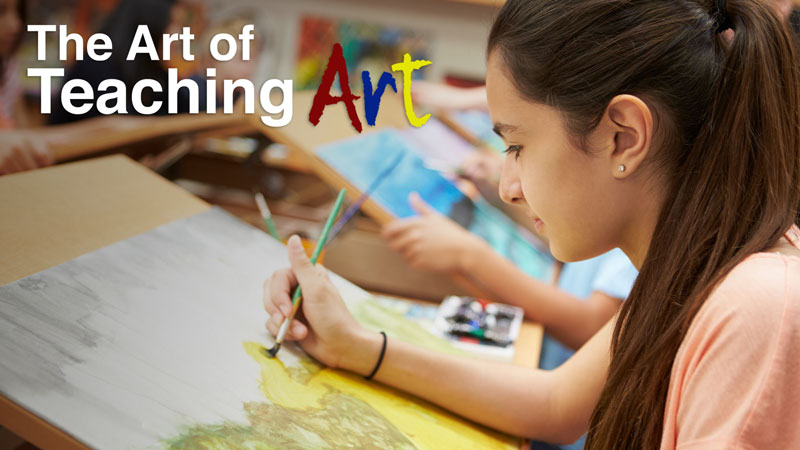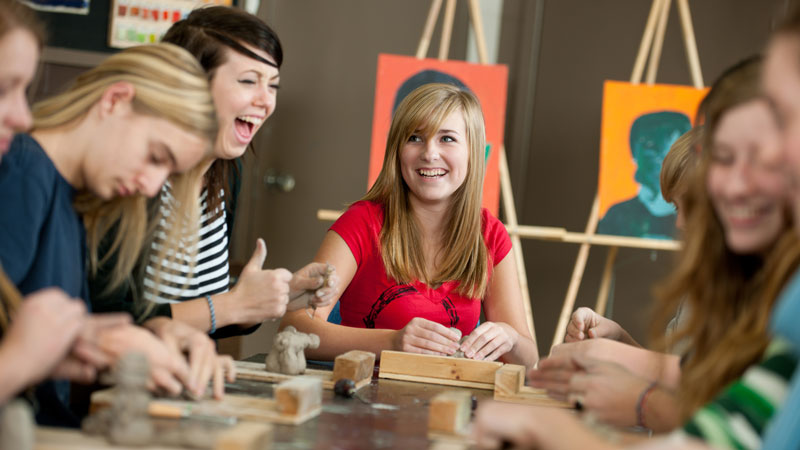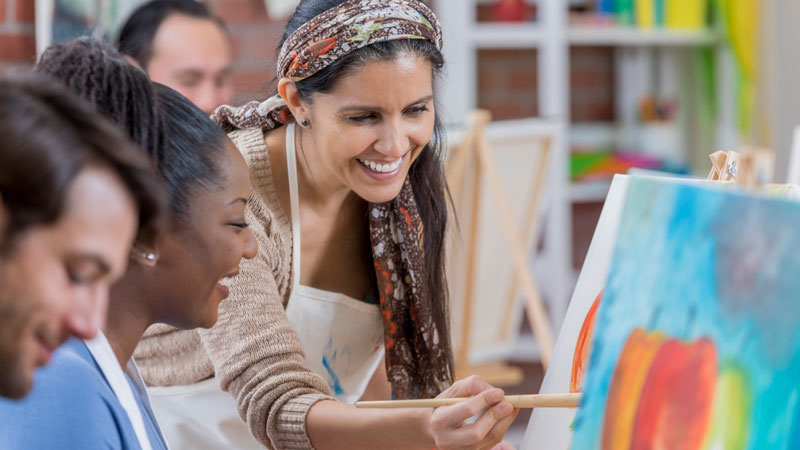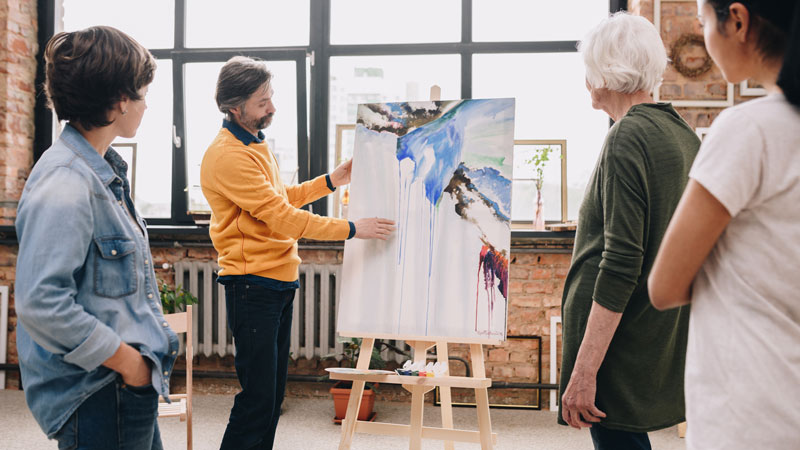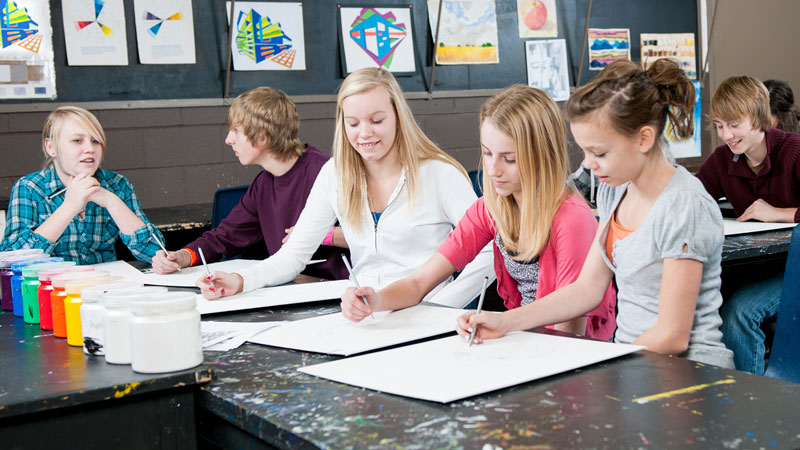
Unfortunately, self doubt wins out with many students and the satisfaction of the creation process quickly transforms into frustration. The struggle that many art instructors face involves the inner battle that happens within the art students themselves. Doubt of skill and ability and the fear of failure often lead many students to stop pursuing art.
All art instructors, if they desire to be effective, must confront this issue with their students and learn how to overcome it so that their students can succeed. Drawing is, after all, a skill that is learned and developed. It is practiced, and mastery takes time and patience. Over time, students will gain confidence in their art and their work will naturally improve.
It is the challenge of the teacher to keep the confidence of the art student in check but be honest about specific improvements the student can make. Teachers who possess the ability to balance this approach are often the best art teachers.
Creating an Environment for Learning Art
Environment is also important in nurturing and developing artistic skill. Many students are turned away from art simply because of a poor environment for learning. Learning and developing artistic skill is unlike the impersonal learning of mathematics or science. Artistic activities, such as drawing, are inherently personal.
Student artists connect with their work and when it is judged, or even perceived to be judged, it can be intimidating and stifling to artistic progress. Many adults have long believed that they are incapable of drawing or creating good art because of an experience that they may have had many years ago in poor learning environment.
Often, these experiences have occurred in a judgmental environment. It is important for art instructors to create an environment that is conducive for developing artistic skill in students. For developing artists, this environment needs to be non-competitive and especially non-judgmental.
A non-competitive environment allows the art learner to be creative, spontaneous, and most importantly – “free to make mistakes” and take chances. These factors are important to artistic development, and when they are missing, artistic progress is hindered, rather than helped.
Structure still needs to exist to encourage artistic progress. Expectations need to be established, whether this comes from the art teacher in a classroom, or from the self-taught artist. The goal should be to set expectations to provide students or yourself with enough structure to measure success, but enough freedom to allow for creativity.
Whether you are the teacher, the student, or both, learning artistic skill is unlike learning any other skill or discipline. It is fragile. Understanding how to nurture and grow the abilities of your students or those of your own is important to success. Create an environment for your students or for yourself where judgment is kept “in check” and where creativity and mistakes are free to happen.
If so, join over 36,000 others that receive our newsletter with new drawing and painting lessons. Plus, check out three of our course videos and ebooks for free.


